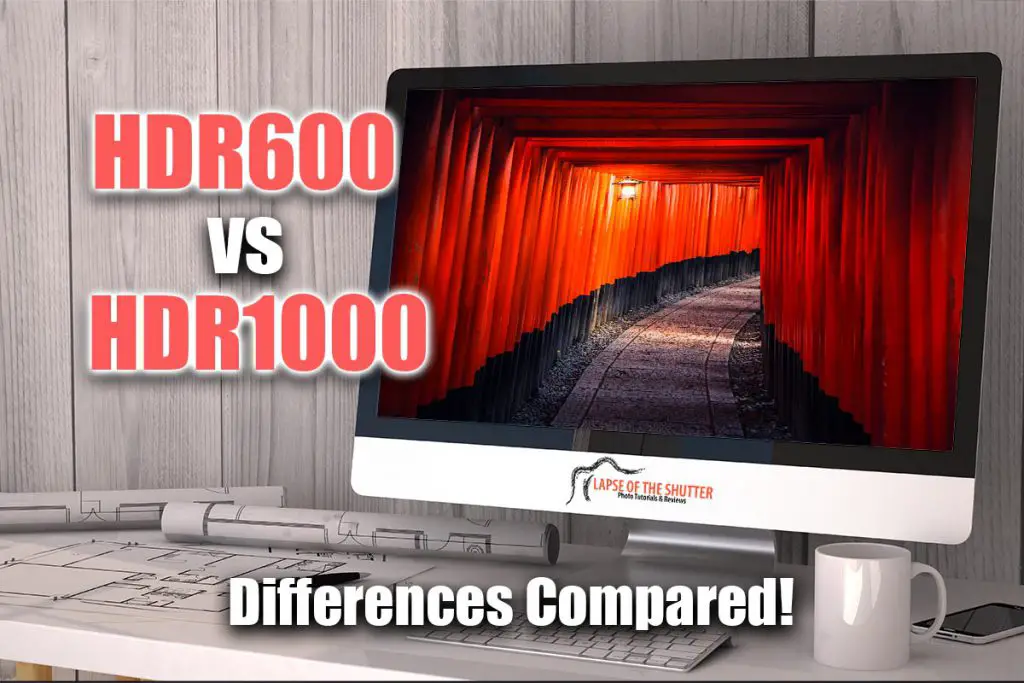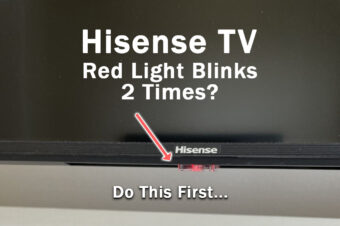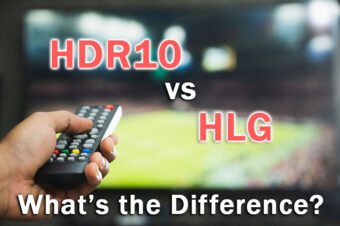When comparing HDR 600 vs HDR 1000, the difference is that HDR600 has a lower minimum luminance of 600 cd/m2, while HDR1000 has a minimum luminance of 1000 cd/m2 plus better active dimming.
You will have seen monitors and laptops that claim to meet HDR600 and HDR1000 specfications, but what does this really mean?
In essence, HDR means that screens have a larger dynamic range, with more detail present in both the lighest and darkest parts of the image when compared to non-HDR screens.
Both HDR 600 and HDR 1000 are specific methods of measuring the levels of performance on this HDR technology, but not all HDR standards are created equally.
This article will clear up any confusion you have on HDR1000 vs HDR600 and give you some tips on how to avoid the more unscrupulous manufacturers, who might claim their products meet a standard that they do not.

What’s the Difference Between HDR 600 vs HDR 1000?
Both HDR 600 and HDR 1000 are standards found on mid- to high-end monitors and laptops, and although the most obvious difference is in their minimum brightness levels of 600 nits and 1000 nits respectively, there are also a few other crucial differences that might affect your choice.
HDR600 and HDR1000 vs DisplayHDR600 and DisplayHDR1000
Before we look at the differences between the two specifications, it’s important to separate those screens that are truly hit their HDR standards from those that manufacturers only claim hit these standards, with this being done through carefully reading the marketing terminology used.
On their own, both HDR600 and HDR1000 are fairly meaningless. Although you could expect monitors from both standards to hit 600 cd/m2 and 1000 cd/m2 in luminance respectively, you have no idea if this is a sustained test of the whole screen, a partial test of the screen center or a flash test.
Consequently, any screen that is solely described as “HDR600” or “HDR1000” might not offer you the performance that you expect, as this terminology means that they have not been independently verified.

The only organisation that is able to properly measure whether a screen hits HDR600 or 1000 is VESA, a non-profit that rigourously tests monitors supplied by manufacturers according to their own specifications.
These specifications are under the DisplayHDR name.
Unfortunately, this is often shortened by consumers to simply “HDR”, meaning that when manufacturers use terms like HDR600, consumers assume that this means the screen hits the official DisplayHDR600 standard, when in fact the screen doesn’t.
If, on the other hand, a screen has a VESA certified DisplayHDR 600 certification (which will be shown in the marketing materials) then it definitely will meet the official standard (although you should watch out for some manufacturers even trying to cheat at this).
This DisplayHDR certification means that a monitor is guaranteed to hit a certain brightness level in both a 10% center patch test, a flash test, and a sustained 30 minute full screen test, plus it also specifies a certain color gamut, global or local dimming, and many other technical criteria.
Therefore, you should always look out for VESA Certified DisplayHDR 600 or 1000 to ensure that your screen is really hitting the standard, and not a sub-standard made up by a manufacturer.
The Complete Differences Between HDR1000 vs HDR600
Going by the offical definitions of HDR1000 and HDR600, the complete differences between them are:
Display HDR600 – for Professional and Enthusiast Laptops and Monitors
- Blacks are less deep and slightly more gray
- Local dimming, though with less contrast than DisplayHDR 1000
- Peak luminance of 600 cd/m2 in 10% center patch test and flash test
- Peak luminance of 350 cd/m2 sustained for 30 minutes over the entire screen
Display HDR1000 – for Professional and Enthusiast Monitors
- Max black luminance is half the level of DisplayHDR 600, offering much deeper blacks
- Local dimming offers 2x more contrast than DisplayHDR 600
- Peak luminance of 1000 cd/m2 in 10% center patch test and flash test
- Peak luminance of 600 cd/m2 sustained for 30 minutes over the entire screen
And the similarities between them are:
- 10-bit image processing
- Very high color gamut at >99% sRGB and 90% of the wide color gamut DCI-P3
You can compare HDR 1000 and HDR 600 in the video below, but note that it can be difficult to see the real differences in a video.
HDR600 vs HDR1000 Summary
If you see a label like, “HDR600” or “HDR1000” on a monitor, it often only means that the monitor can briefly reach a peak luminance of 600 nits or 1000 nits respectively.
On the other hand, if you see, “DisplayHDR600” or “DisplayHDR1000”, along with the VESA certified logo, then you can be sure that your monitor meets much stricter standards on brightness, color gamut and local dimming.
You can see an official list of monitors and laptops that meet the DisplayHDR600 and DisplayHDR1000 standards at the links.
HDR Differences in Practice
Broadly speaking, you won’t see a huge amount of difference between screens at the HDR600 and 1000 standards, as these are consecutive steps within the HDR framework – there’s no HDR800 for example.
The only real areas where HDR600 lacks performance when compared to HDR1000 is:
- Less deep blacks
- Half of the theoretical max contrast
- Lower peak luminance in both center patch and sustained tests
If you are only using your monitor for general use like web browsing, or even for photo editing, then the extra price of HDR1000 monitors is not going to be value for money for you.

However, if you are gaming, then the extra contrast, improved local dimming and more detail visible in the darkest areas will likely be reason enough for you to look at HDR1000 monitors.
These features allow for a much more natural image to be produced, although note that your game will have to support the DisplayHDR standard in order to see the best performance from your screen. It will still work fine when used with software not tuned to VESA’s standards, but lacks a noticeable edge in performance that you get with fully optimized software.
Final Thoughs: Is HDR600 or HDR1000 Better?
There’s no doubt that in pretty much all situations, HDR1000 offers better image quality and a more enjoyable experience than HDR600. The real question is, is the extra cost of a DisplayHDR 1000 monitor worth it?
If you are gaming, then HDR1000 is definitely worthwhile, though for photo editing, design work and general use, you are unlikely to see many benefits, with an HDR600 screen being good enough in almost all cases.
Do remember though, that VESA increase their standards all the time, with a number of monitors now available at DisplayHDR1400, offering even greater contrast and a wider color gamut, albeit at quite a significantly higher price.
Read More:
[Solved] Hisense Roku TV remote not working






Leave a Reply